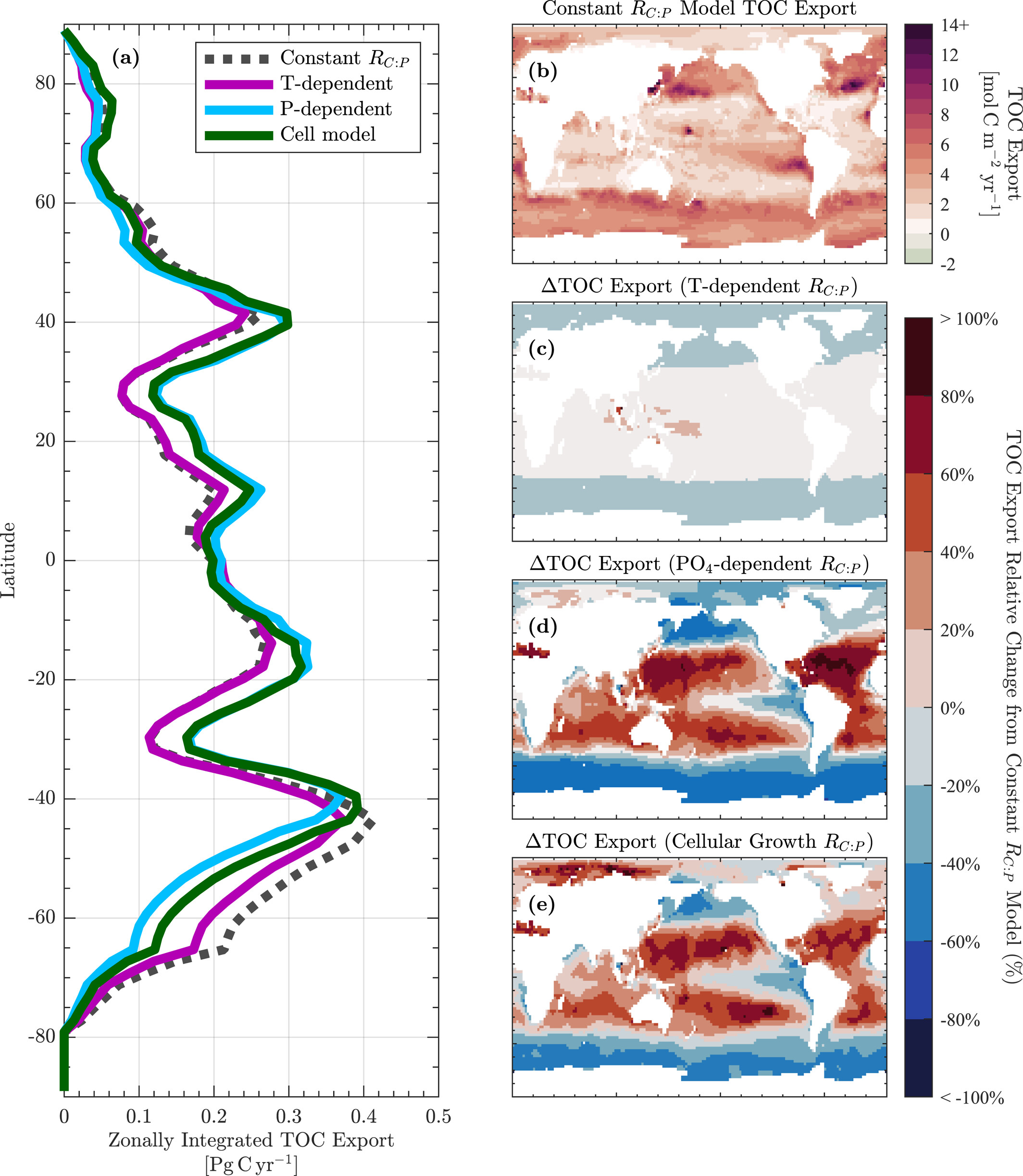Integrating Trait-Based Stoichiometry in a Biogeochemical Inverse Model Reveals Links Between Phytoplankton Physiology and Global Carbon Export
Megan R. Sullivan, François W. Primeau, George I. Hagstrom, Wei-Lei Wang, Adam C. Martiny
Published in Global Biogeochemical Cycles, March 2024
The elemental ratios of carbon, nitrogen, and phosphorus (C:N:P) within organic matter play a key role in coupling biogeochemical cycles in the global ocean. At the cellular level, these ratios are controlled by physiological responses to the environment. But linking these cellular-level processes to global biogeochemical cycles remains challenging. We present a novel model framework that combines knowledge of phytoplankton cellular functioning with global scale hydrographic data, to assess the role of variable carbon-to-phosphorus ratios (RC:P) on the distribution of export production. We implement a trait-based mechanistic model of phytoplankton growth into a global biogeochemical inverse model to predict global patterns of phytoplankton physiology and stoichiometry that are consistent with both biological growth mechanisms and hydrographic carbon and nutrient observations. We compare this model to empirical parameterizations relating RC:P to temperature or phosphate concentration. We find that the way the model represents variable stoichiometry affects the magnitude and spatial pattern of carbon export, with globally integrated fluxes varying by up to 10% (1.3 Pg C yr−1) across models. Despite these differences, all models exhibit strong consistency with observed dissolved inorganic carbon and phosphate concentrations (R2 > 0.9), underscoring the challenge of selecting the most accurate model structure. We also find that the choice of parameterization impacts the capacity of changing RC:P to buffer predicted export declines. Our novel framework offers a pathway by which additional biological information might be used to reduce the structural uncertainty in model representations of phytoplankton stoichiometry, potentially improving our capacity to project future changes.

Fig. (a) Zonally integrated Total Organic Carbon export at the base of the euphotic zone for all models. (b) Spatial distribution of TOC export computed from the model using a global constant RC:P. (c–e) Maps showing the TOC export anomaly from the constant RC:P case for each of the variable RC:P parameterizations.
Sullivan, M. R., Primeau, F. W., Hagstrom, G. I., Wang, W.-L., & Martiny, A. C. (2024). Integrating trait-based stoichiometry in a biogeochemical inverse model reveals links between phytoplankton physiology and global carbon export. Global Biogeochemical Cycles, 38, e2023GB007986. https://doi.org/10.1029/2023GB007986